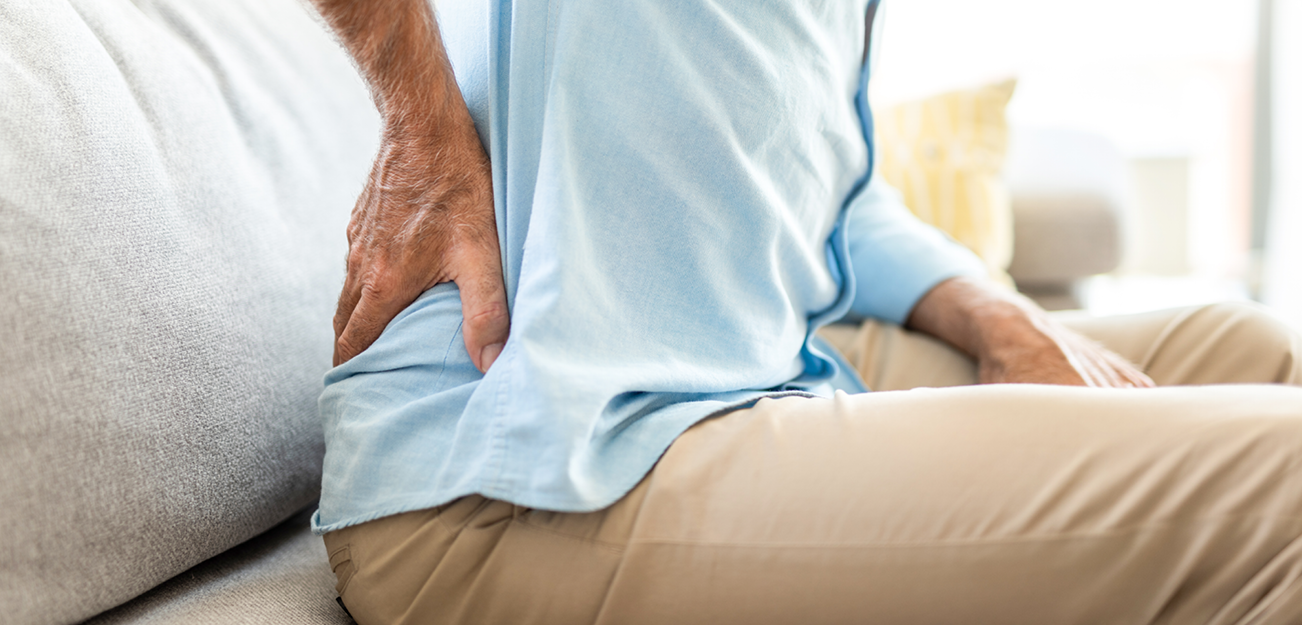Lower Back Pain
Low back pain can happen anywhere below the ribs and above the legs. It is possible to hurt your back when you lift, reach, or twist. In fact, it is very common for everyone to have had low back pain at one time or another.
What causes low back pain?
Causes of low back pain include:
- Overuse, strain, or injury
- Aging
- Herniated disc
- Arthritis
- Compression fractures
- Illness
- A spine problem from birth
What are the symptoms?
Depending on the cause, low back pain can cause many different symptoms. The pain can be dull or sharp. It may be in one small area or over a larger area. You may also experience muscle spasms.
Low back pain can also cause symptoms in the legs, such as pain, numbness, or tingling.
Most low back pain is short-term (acute) and will go away in a few weeks.
How is low back pain diagnosed?
Your doctor will ask questions about your past health, symptoms, and activities and will do a physical exam. Your answers along with the exam can help determine the cause of the pain. In most cases, doctors can recommend treatment after the first exam.
Tests such as X-rays, CT scans, and MRIs usually don't help. But if you have a back pain problem that has lasted longer than 6 weeks it might be time for one of these tests.
How is it treated?
Most low back pain will improve by continuing to do light activity such as walking and taking over-the-counter pain medicine as needed.
Walking is the simplest and possibly the best exercise for the lower back. It gets your blood moving and helps your muscles stay strong.
Your doctor or physical therapist can recommend more specific exercises to help your back muscles get stronger. Strengthening the muscles in your trunk can improve your posture, keep your body in better balance, and lower the probability of injury.
If your symptoms are severe or you still have symptoms after 2 weeks of self-care, see your doctor. You may need stronger pain medicines, or you might benefit from manual therapy.
You may also need to try different things to see which work best for you, such as:
- Spinal manipulation
- Message
- Acupuncture

How can you prevent low back pain from returning?
After you've had low back pain, you're likely to have it again. But there are some things you can do to help prevent it. And they can help you get better faster if you do have low back pain again.
To help keep your back healthy and avoid further pain:
- Practice good posture
- Get regular, low-impact exercise.
- Sleep on your side.
- Watch your weight.
- Don't try to lift things that are too heavy for you.
If you sit or stand for long periods at work:
- Sit or stand up straight, with your shoulders back.
- Make sure your chair fits you and has good back support.
- Take regular breaks to walk around.
Find a Provider
Lower back pain is typically managed by a primary care physician. Choose your MagnaCare health plan; then search for Primary Care Physician in the Find a Provider menu.

